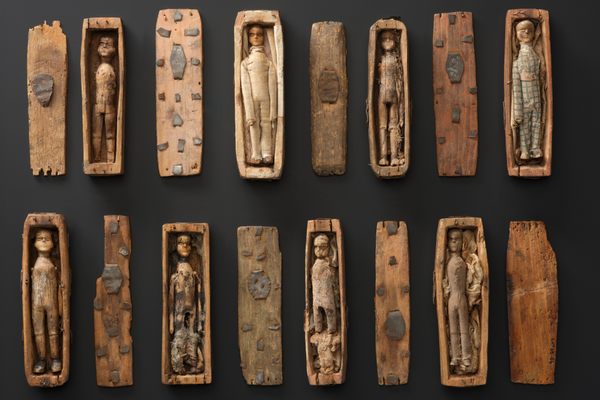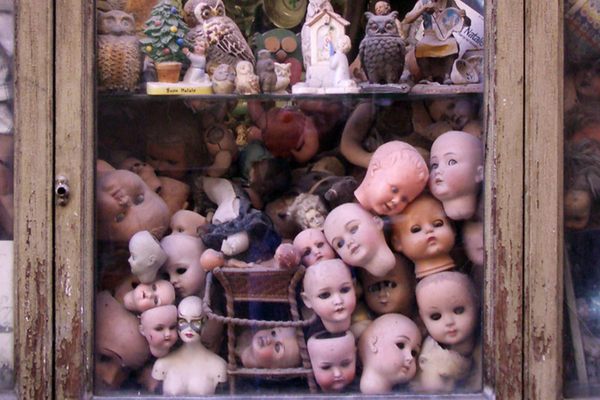Day 23: Teeny Tiny Murder Victims
31 Days of Halloween: On Atlas Obscura this month, every day is Halloween. Stop by the blog every day this month for true tales of the unquiet dead. Come for the severed heads, stay for the book bound in human skin. Every story is true, and each one is a real place you can visit. We dare you.

In 1836, two boys discovered a dozen tiny carved figures hidden in a niche in Edinburgh’s massive park. Could they be effigies of victims planted by the city’s most notorious murderer?
In 1827, two enterprising young men discovered a solution to the time consuming labors involved in finding and digging up dead bodies to sell to the city’s anatomists: they decided to source the bodies themselves. For two years Williams Burke and Hare, with the help of their lady friends, bumped off 17 victims and provided them as dissection models for Edinburgh’s surgeons. Fresh bodies were a hot commodity in the era before the legalization of non-criminal post-mortem anatomy subjects. But there were only so many dead criminals. Doctors needed to learn, so the supply and demand led more or less naturally to these so-called “Anatomy Murders”.
When the duo were caught (tripped up by a would be victim), Hare turned on Burke, who took the blame and was hanged in January 1829 - his body handed over for dissection, natch.
The discovery of the dolls just a decade after the crimes led many to suggest that the 17 tiny dolls could be the creation of one of the killers, burying the dolls in place of the victims who never received proper burials. DNA tests in 2005 (tested against samples taken from Burke’s bones, kept on display at the Royal College of Surgeons) were inconclusive. It is also possible that the dolls were carved by one of the other willing accomplices, all who lived long after Burke’s hanging.
WHY THEY’RE JUST PRECIOUS
BURKE & HARE MURDER DOLLS, Edinburgh, Scotland











Follow us on Twitter to get the latest on the world's hidden wonders.
Like us on Facebook to get the latest on the world's hidden wonders.
Follow us on Twitter Like us on Facebook